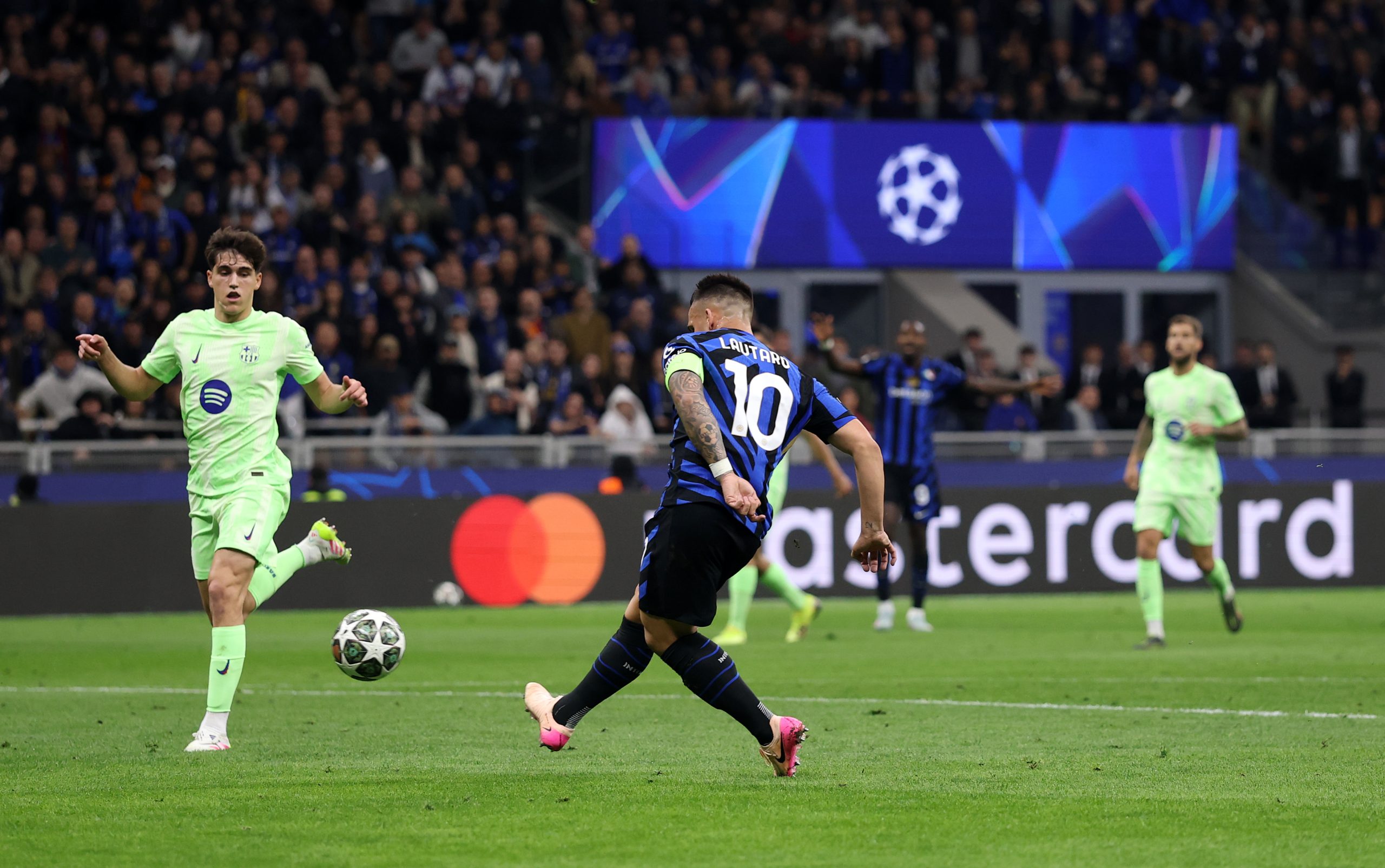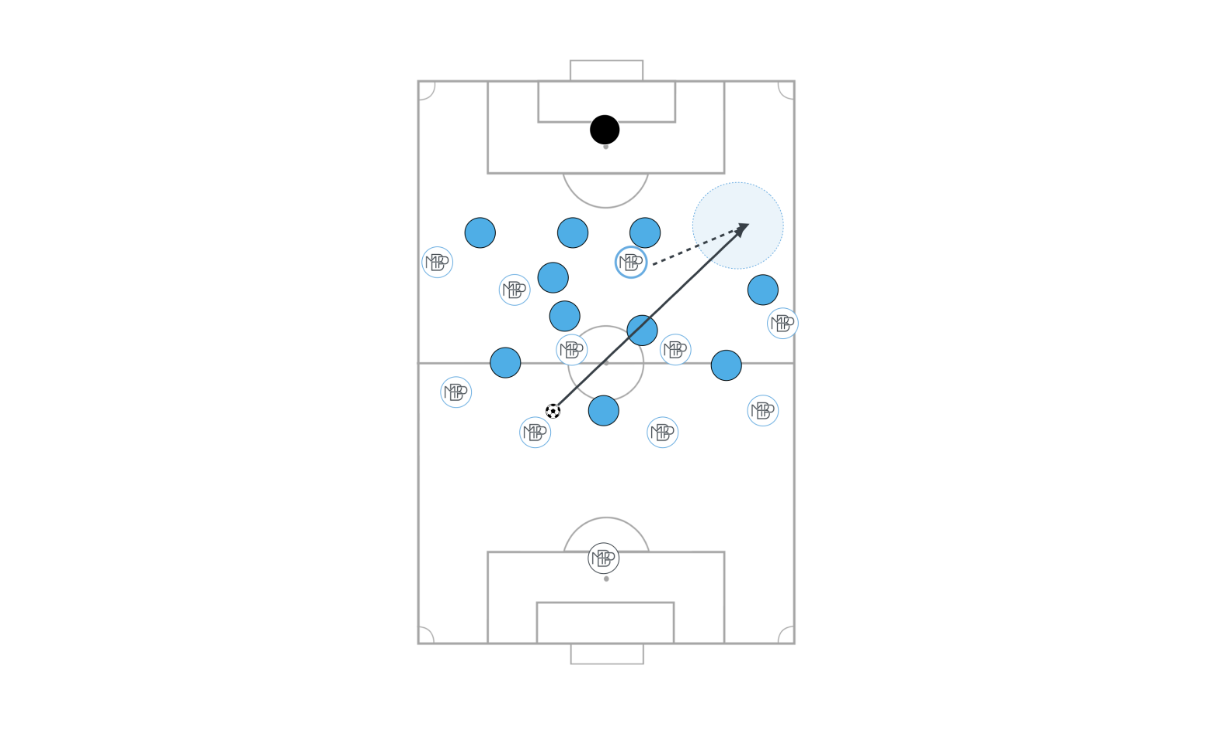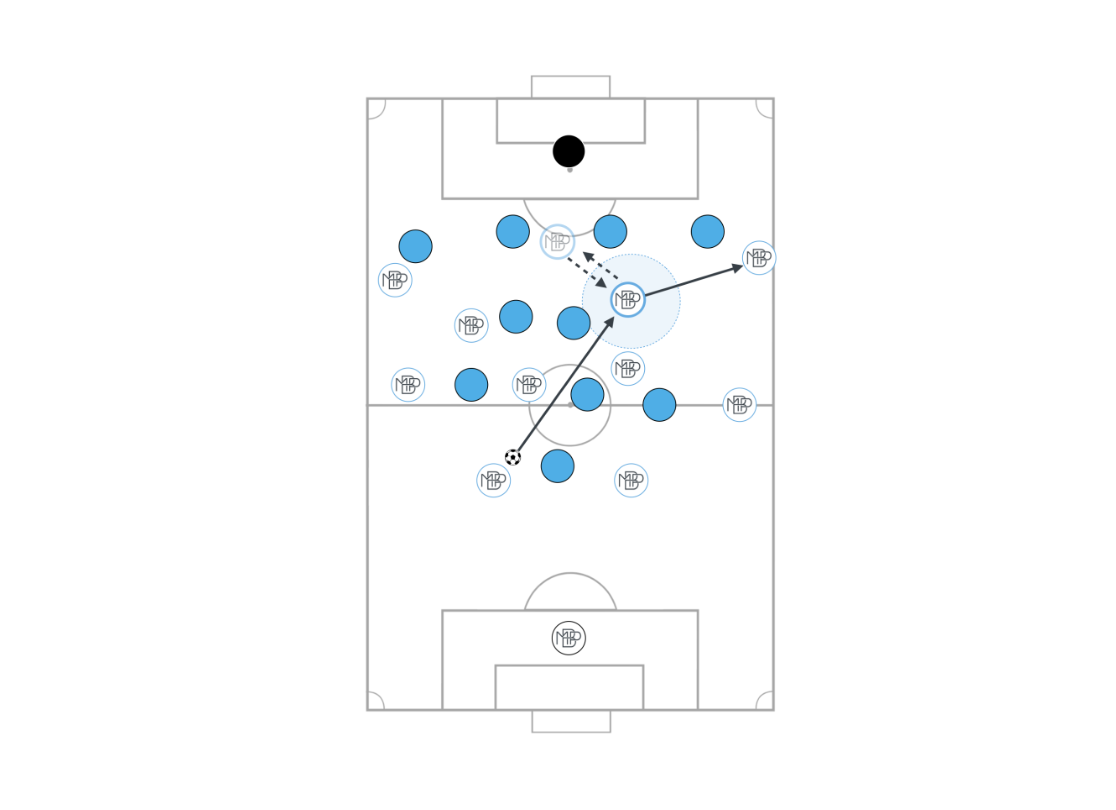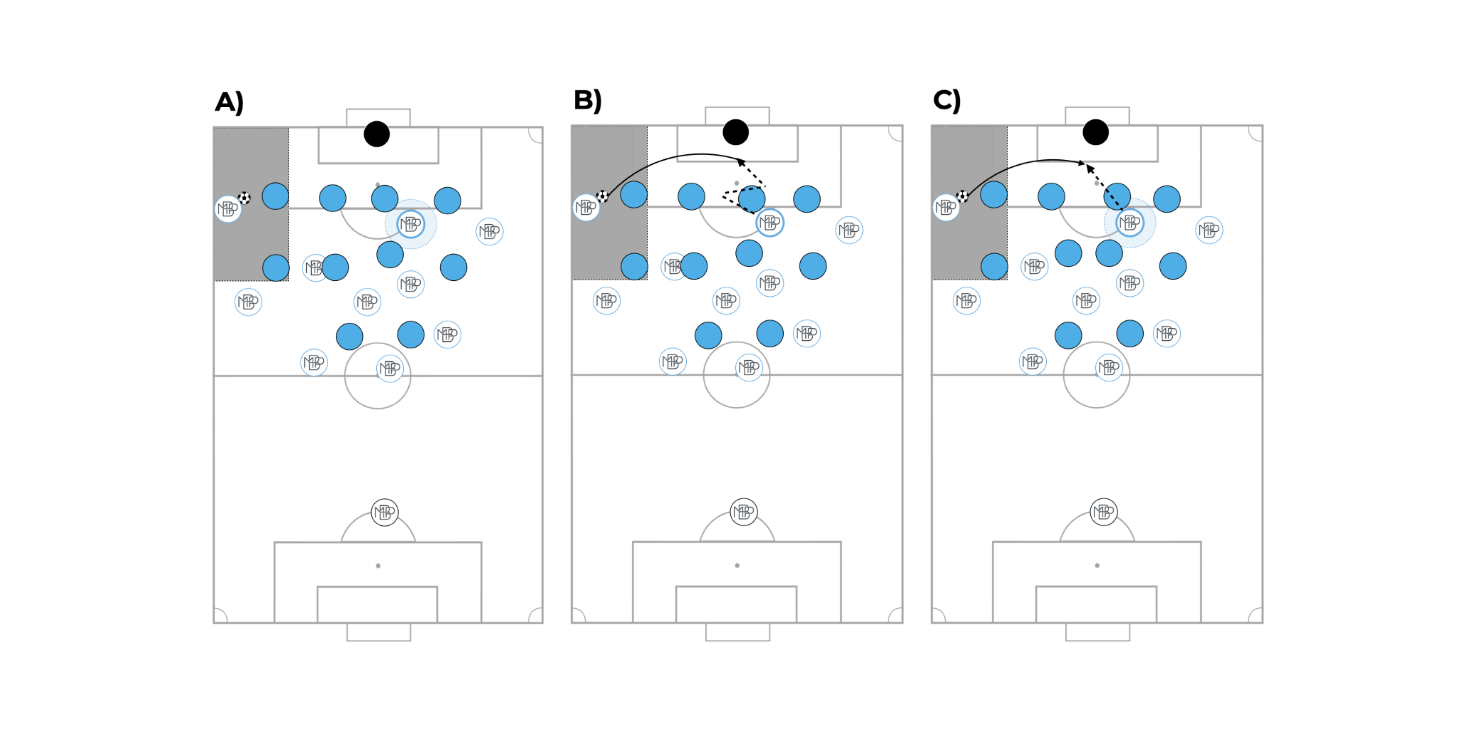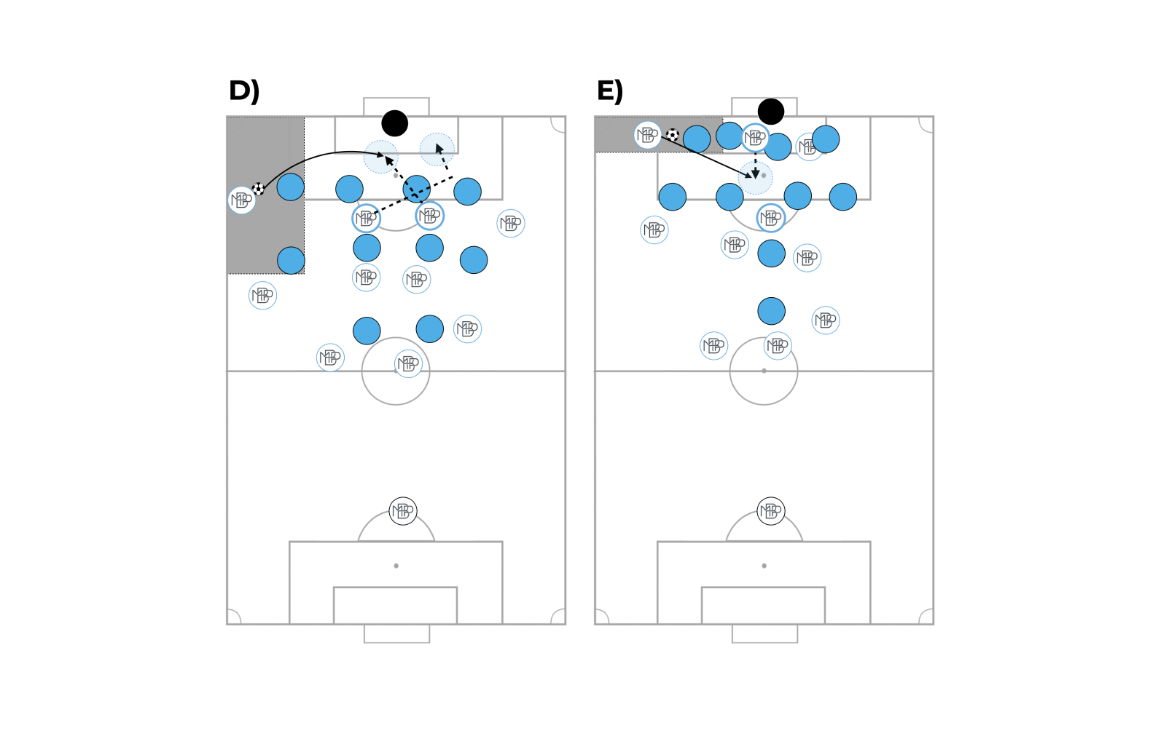A few months ago, we discussed the 4 striker profiles that we can currently find in high performance as well as their main characteristics. However, in this blog we want to make special mention of the profile of the target man and 3 of the most important fundamentals that this player must master.
When we talk about the profile of the target man, we imagine a strong and powerful striker, who allows the team to play more vertically thanks to their ability to control the ball and create advantages for their teammates. It is therefore essential that they are proficient in a series of specific fundamentals that will allow them to be successful in these playing situations. Do you want to see what they are? Here are the 3 key ones:
1. Offering Support as a Second Line:
This is a fundamental that appears when the ball possessor is under pressure and/or cannot progress in the play in an associative way with the first line, while the centre forward is in the second line in relation to the ball.
Image 1. A picture of the centre forward’s fundamental of ‘offering support as a second line’ Source: MBP Coaches’ School
In this case, the striker offers themselves as a second line to overcome the pressure by the opponents on the line of the ball, carrying out a movement that can be of two types: a supporting lay off the ball to a teammate or a movement into space, normally moving diagonally towards the wing. In the latter case, it is important that another player occupies the position of the striker.
Image 2. Sequence of play where Lewandowski applies the ‘offering support as a second line’ fundamental. In this case, a supporting movement to lay-off in front of the nearest teammate. Source: MBP Coaches’ School (modified from Wyscout)
2. Recovering the Position after Participating Outside the Zone of Intervention:
This is a fundamental that is applied after the striker has participated in the construction of the play, either by offering support or dismarking in behind. In other words, if they go out to offer support or make a run into space – often being offside – they must quickly regain their position.
Image 3. Image of the centre forward’s fundamental of ‘recovering the positiong after participating outside the zone of intervention’ Source: MBP Coaches’ School
However, they will not always have to apply the fundamental, as there will be situations in which the team’s game model may provide for other players to occupy that free position, or in the case of playing with two forwards in the centre with one always remaining fixed up top, guaranteeing the team’s depth.
Finally, it must be mentioned that the best way to apply this fundamental is to alternate explosive movements with repositioning at moderate intensity, in order to have a better chance of surprising the defensive line.
Image 4. Sequence of play where the centre forward of Germany, Kai Havertz, applies the fundamental of ‘recovering the position after participating outside the zone of intervention’ Source: MBP Coaches’ School (modified by Wyscout)
3. Fundamentals Linked with Wide Crosses:
In this case, it is a block of fundamentals linked to situations involving wide crosses into the area. Taking into account the physical characteristics of this striker profile, it is crucial that they master the following fundamentals within the finishing area:
A. Finding the Position Behind the Backs of the Centre Backs in Potential Crosses from the Wing
B. Changing Direction to Lose the Marker to Finish Crosses
C. Attacking the Ball as soon as Possible in its Trajectory
D. Attacking the Most Effective Spaces to Finish the Cross
E. Offering the Passing Option for the Cut Back from the End Line
Image 5. Image of the centre forward fundamentals of ‘Finding the Position Behind the Backs of the Centre Backs in Potential Crosses from the Wing, Changing Direction to Lose the Marker to Finish Crosses, Attacking the Ball as soon as Possible in its Trajectory, Attacking the Most Effective Spaces to Finish the Cross, Offering the Passing Option for the Cut Back from the End Line Source: MBP Coaches’ School
Image 6. Sequence of play where Haaland applies the principle of ‘Finding the Position Behind the Backs of the Centre Backs in Potential Crosses from the Wing’ Source: MBP Coaches’ School (modified by Wyscout)
We can see how the application of the fundamental helps the Norwegian striker to win the back of his direct marker in order to meet the cross and finished unmarked at the far post.
Image 7. Sequence of play where Lautaro Martínez applies the fundamental of ‘Changing Direction to Finish off Crosses’ Source: MBP Coaches’ School (modified by Wyscout)
On this occasion, Martínez makes a movement that deceives their direct defender which enables him to create space for himself to attack the ball, which ties in with the fundamentals of ‘attacking the ball forward as early as possible in its trajectory’ and ‘getting to the most effective spaces to connect the shot’.
It is clear, therefore, that although these are fundamentals that other striker profiles can perform, in the case of the target man they will be key to their game due to the fact that they are situations that they will have to solve frequently during the course of matches.
Do you want to learn more about Individual Fundamentals by Position?
The ‘Specialist in Individual Fundamentals by Position’ course will allow you to study in depth the more than 90 individual fundamentals by player position. All these fundamentals are the result of an extensive study of each and every one of the most common and relevant situations in which each player finds themselves in during a game depending on their position on the field. Once these situations in the game have been identified, we study which are the optimal responses that give the player the best chance of success.

